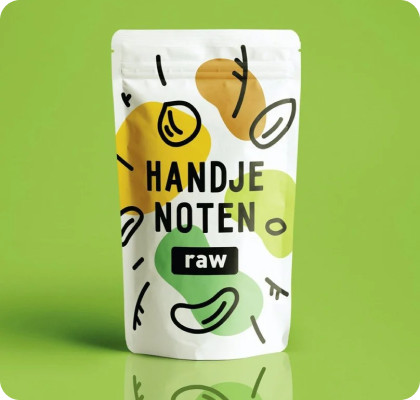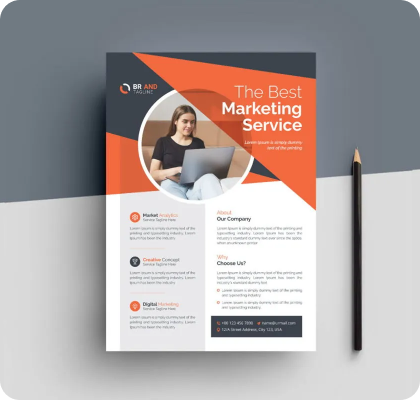Coaches and solopreneurs often lack the technical skills or budget to build custom websites. Fortunately, 2025’s no-code web development tools empower coaching professionals to create high-converting websites without writing a single line of code. In fact, Gartner predicts that by 2025, 70% of new business applications will use low-code or no-code technologies
, illustrating how mainstream and powerful these tools have become. This blog post explores how coaches can leverage no-code platforms to quickly launch professional, conversion-optimized websites that attract and convert clients.
The Rise of No-Code Platforms (Why It Matters for Coaches)
No-code and low-code platforms (like Wix, Squarespace, Webflow, and Carrd) have matured, allowing users to drag-and-drop their way to a functional website. For coaches, this is a game-changer. You no longer need to hire an expensive developer for a solid online presence. Key reasons no-code is trending in web development:
- Speed and Ease: Build pages with visual editors and pre-built templates in hours rather than weeks. This speed-to-market is crucial for coaches who want to capitalize on trends or launch a webinar landing page quickly.
- Lower Cost: No-code tools are often subscription-based and far cheaper than custom development. For a coaching business just starting, keeping costs low is vital.
- Flexibility and Control: You can update your site content, design, or funnel anytime on your own. Want to add a new testimonial or offer? It’s as easy as editing a document.
Industry Insight: The growth of no-code reflects a broader democratization of tech. By removing coding barriers, professionals like coaches can adapt their websites faster. Studies even show enterprises rapidly adopting no-code for agility
, so it’s no surprise individual business owners are following suit.
Key Features of a High-Converting Coaching Website
Even with easy tools, coaches must implement smart design and marketing principles to ensure the site actually converts visitors into leads or clients. Here’s what to focus on:
- Clear Value Proposition: As soon as someone lands on your homepage, they should understand who you help and the results you deliver. A compelling headline like “Achieve [Specific Goal] in [Timeframe] with [Your Coaching Method]” can grab attention.
- Strong Calls to Action (CTAs): Every page should guide visitors toward an action – e.g., “Book a Free Discovery Call,” “Download My Coaching Toolkit,” or “Join Our Webinar.” Make these buttons prominent and repeated naturally down the page.
- Personal Branding: As a coach, you are your brand. Use professional yet approachable photos of yourself. A short video introduction on your landing page can increase conversions by up to 80%
, helping visitors feel connected before they even speak to you. Leverage your unique story and credentials to build trust.
- Social Proof: Include testimonials from past clients, case studies, or credentials (e.g. certifications, media features). Visitors are more likely to trust and engage with you if others have achieved results through your coaching.
- Mobile-Friendly Design: Ensure the no-code template is mobile-responsive. More than half of web traffic is mobile, and 57% of users won’t recommend a business with a poorly designed mobile site
. Coaches can’t afford to lose leads due to a bad mobile experience, so test your site on phones and tablets.
- SEO Basics: No-code doesn’t mean no optimization. Coaches should still do basic on-page SEO – adding relevant keywords (e.g., “life coach in Chicago” or “executive coaching for entrepreneurs”) in titles, meta descriptions, and content. This helps your site get discovered via search engines for organic traffic.
Recommended No-Code Tools for Coaches in 2025
Not all no-code platforms are created equal. Here are a few top choices and their benefits for coaching businesses:
- Webflow: Great for more design-savvy users who want flexibility. Webflow allows fine-tuned control over layout and integrates well with custom animations or interactions, which can make a coach’s site stand out visually.
- Wix ADI (Artificial Design Intelligence): Wix’s ADI can literally generate a starter website after you answer a few questions. It’s perfect for coaches who need a decent site fast. You can then customize the content and images.
- Squarespace: Known for beautiful templates. If your coaching brand leans on aesthetics (e.g., wellness or creative coaching), Squarespace templates can give a polished look with minimal effort.
- Kajabi or Podia: If you plan to sell courses or digital products alongside coaching, these platforms combine website builders with course/membership functionality. They are low-code rather than pure no-code, but very coach-friendly.
Each of these tools has templates specifically for consultants, coaches, or personal brands. Pick one that matches your comfort level and the features you need (for instance, scheduling integrations, forms to collect emails, or blogging capability for content marketing).
Driving Conversions with Smart Design and Content
Using no-code tech is just the start; populating your site with strategic content is what brings conversions:
- Engaging About Page: Coaches should humanize their brand on the “About” page. Share your journey and philosophy briefly, but frame it around how it benefits the client (e.g., “After 10 years in corporate management, I realized my passion is helping others climb the career ladder without burnout – which is why I became a certified career coach.”). This builds relatability and authority.
- Service Pages that Solve Problems: Instead of just listing “Coaching packages,” write service pages that speak to the pain points of your ideal client. For example, “Overcome Imposter Syndrome Coaching” or “Launch Your Business Program – 12 Weeks to Your First 5 Clients.” This aligns with the search intent of potential clients (they might search “help with imposter syndrome”) and immediately shows you provide a solution.
- Lead Magnets and Email Capture: Offer a free resource tailored to your audience – e.g., “Free 5-Day Self-Confidence Email Course” or a PDF workbook. Use prominent signup forms (your no-code builder will have form elements) to capture visitor emails in exchange for the resource. This grows your list and funnels warm leads into your sales process. Make sure the offer is front-and-center on the homepage and perhaps via a top bar or exit-intent popup (many no-code site builders support simple popups or integrate with tools that do).
- Blog Section: Regular blogging can boost your site’s SEO and authority. Write articles answering questions your clients frequently ask (“How to stay motivated while job hunting,” “Mindset tricks for entrepreneurs,” etc.). Not only does this improve your Google rankings, but it also gives potential clients a taste of your expertise. Aim for quality over quantity; one well-researched post per month beats four thin posts. Remember, longer helpful posts can rank better on Google
, and demonstrate your knowledge to readers.
Throughout your site content, incorporate internal links. For instance, if you mention “marketing strategy” on a blog post, link it to your own post about marketing for coaches (if you have one) or a relevant page. This keeps visitors on your site longer and improves SEO. Also, link to high-authority external resources to back up your claims (just as we’re doing with references here). For example, when stating a statistic or best practice, cite a credible source like a HubSpot study or Google guideline – this builds trust with the reader. (And as a bonus, outbound links to authoritative domains can be a positive SEO signal
, showing search engines you’re not an isolated island of content.)
Conclusion
No-code web development has levelled the playing field, enabling coaches to establish a compelling online presence quickly and affordably. By focusing on clear messaging, smart design, and strategic content, even a one-person coaching business can turn their website into a lead-generating machine. The key is to treat your site not just as a brochure, but as a dynamic sales funnel – one that educates visitors, builds trust, and drives them to take action (book that call, register for the webinar, etc.).
A great coach deserves more than a weak homepage Don’t wait for technical help – try a no-code platform and implement the tips above to launch your improved site within days. If you need guidance or a professional eye, contact our web development team for a free consultation on building a results-driven coaching website. Let’s turn your online presence into your best client acquisition tool!








